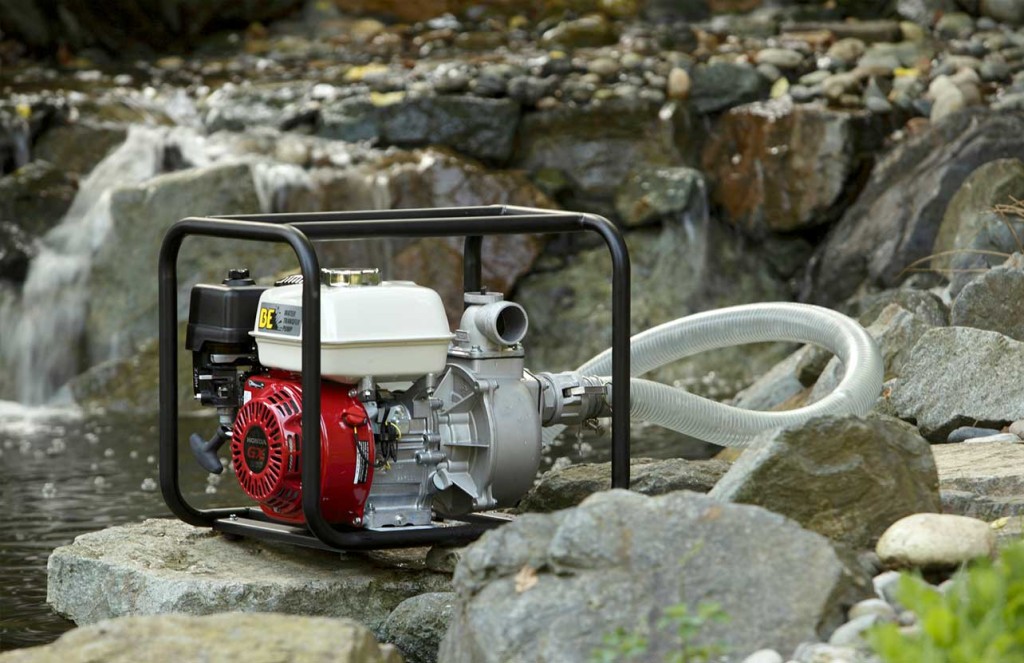How to Use a Water Pump

The most common problem we see with water pumps is that the customer cannot get it primed.
Water pumps are very simple and very easy to prime, but you must make sure of the following:
- There must be no leaks in the suction hose or connection to the water pump. The slightest of leak will cause the pump to suck air and it will not prime.
- The pump body must be filled with water before starting to prime.
- Ensure that all seals are intact and 'sealing'.
How it works..
When you need to use your water pump, the pump and suction hose will be dry of water and full of air.
Water pumps do not pump air very well and running them without water will damage the seals, as water lubricates and cools the seals in the pump.
Many petrol-powered water pumps use a centrifugal impeller and are 'self-priming'. This type of water pump uses an air-water mix to prime the suction hose.
What is a centrifugal water pump?
A centrifugal pump is a pump that uses centrifugal force to create a pressure difference in the liquid it is pumping - this produces the flow rate of the pump.
Try to imagine the effect of a vehicle tyre spraying water off a wet road. The water displacement is not from a 'scooping' action by the blades on the impeller, but rather from the 'spinning' centrifugal force.
Standard (non-self-priming) centrifugal pumps are okay when they operate on water-filled or 'flooded' suction lines or in submersible applications, because the impeller is surrounded by enough water to create the pressure differential and allow it to pump the liquid.
Air is the main enemy of a standard (non-self-priming) centrifugal pump. When this type of pump encounters air, it can stop pumping due to an air lock.
It's much harder to pump air than to pump water, so when there is no water around the pump impellor, the pump can no longer force the water out.
When this air-lock happens, the pump will not work. It won't pump until the air has been removed.
How does a self-priming water pump work?
A self-priming centrifugal pump overcomes the problem of an air lock by mixing air with water to create a water/air fluid mix with pumping properties similar to those of regular water. 
The pump is then able to draw all the air from the suction hose until it is pumping water only, just like a standard centrifugal pump.
It is important to understand that self-priming pumps cannot operate without water in the casing. They need to be filled with water through the priming hole so that during the priming cycle, air enters the pump and mixes with water at the impeller.
Water and air are discharged together by centrifugal action of the impeller into the water reservoir. The air naturally tends to rise, while the water tends to sink.
Air-free water, now heavier than air-laden water, flows by gravity back down into the impeller chamber, ready to mix with more air coming in to the pump body from the suction hose.
Recirculation of water within the pump stops when pumping begins.
The next time the pump is started, it will 'self-prime' - that is, it will be able to once again mix the water and air in the casing to create a pumpable fluid until the pump is fully primed again.
The difference between a self-priming pump and a standard centrifugal pump in that this type has a water reservoir in the pump body to allow the pump prime the suction hose of air by recirculating water within the pump on priming cycle.
This water reservoir should remain full after the pumps has been used, so the pump will self prime every time it is started.
It is essential to make sure that your suction hose has no air leaks, as the pump will not prime if it is sucking in air through a poorly fitting hose connection. Also, all seals and 'o' rings in the pump must be air and water tight.
So, can I just simply start a self-priming pump any time, even If It's dry inside?
No - self-priming pumps must have water in the pump body to allow it to work.
Your self-priming pump will not work right out of the box. If it's full of air, it won't prime.
Self-priming refers to the pump's ability to repeatedly turn an air/water mixture into a pumpable liquid, NOT the ability to create a vacuum out of thin air!
You should never run a water pump without water in the pump, as it can cause seal failure.

